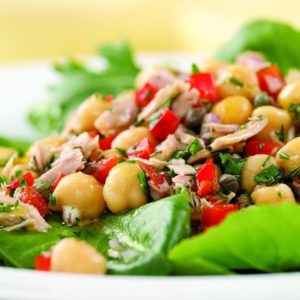Stroke and Nutrition
May is National Stroke Awareness Month. It is important to know how to detect a stroke, possible ways to prevent strokes and how to take care of yourself after a stroke. Every year, more than 795,000 people in the US have a stoke according to the CDC. There are three types of stroke.
- Transient ischemic attack (TIA): This is a Ministroke or warning.
- Ischemic: When a blood clot keeps blood from flowing to the brain. This is most likely due to atherosclerosis-a buildup of fatty deposits in the lining of a blood vessel. This needs treatment.
- Hemorrhagic: When a blood vessel in your brain ruptures or breaks, spilling blood into surrounding tissues.
The National Stroke Association, which is an excellent resource, provides an effective way to identify possible stroke, FAST.
- Face: When you smile, does one side of your face droop?
- Arms: When you raise your arms, does one arm drift downwards?
- Speech: Is your speech slurred or are you having difficulty speaking?
- Time: If you have any of these symptoms, call 911 immediately.
You may have other symptoms such as: confusion, dizziness, severe headaches (the worst headache of your life), nausea and difficulty seeing-blurry vision.
There has been research to support that nutrition plays a role in stroke prevention. In a study published in Stroke And Vascular Neurology, a Cretan Mediterranean diet, which is high in healthy oils, whole grains, fruits and vegetables and low in cholesterol and animal fat has been shown to reduce stroke and heart attack. Americans should consume less than than 300 mg of cholesterol a day and no more than 10% of total calories should come from saturated fat. If you consumed a 2000 calorie diet, this would equal 22 grams or less a day. This plan has been shown to reduce risk and is easy to follow! So what are some good foods to incorporate into your diet?
- Extra virgin olive oil: The first press of the olive
- Bitter greens
- A minimum of 5 servings of fruits and vegetables a day in the US, but this plan recommends 9-11 servings
- Beans
- Nuts
- Seeds
- Two servings of fish a week minimum
- Whole grains
- Low fat dairy
- Very small amounts of red meat (1-2x/month)
- Sweets/added sugar 1x/month maximum
What if you have suffered a stroke? One fifth to one third of post stroke patients have dysphagia-difficulty swallowing foods or liquids, early in recovery. It is important to identify this so that patients do not aspirate, when you breathe a foreign object into your airway, and are monitored accordingly. Healthy eating is critical, but may be limited initially until a patient is able to tolerate solids. Once a patient is able to tolerate food and liquids, it is important to eat as healthy as possible and follow a plan that incorporates fruits, vegetables, whole grains, low fat dairy, lean protein, nuts, seeds and healthy oils. Limit saturated and trans fat, sodium-no more than 2300 mg a day and sugar/added sweets. It is also important to learn healthy size portions.
Eating a healthy diet can reduce risk of stroke. Knowing the signs and symptoms can save your life!
Mediterranean Tuna Antipasto Salad
From: EatingWell Magazine, July/August 2009
Packed with protein and fiber, this tuna and bean salad is ready in a flash. For an extra kick, add a pinch of crushed red pepper or cayenne.
By:EatingWell Test Kitchen
Ingredients 4 servings
- 1 15- to 19-ounce can beans, such as chickpeas, black-eyed peas or kidney beans, rinsed
- 2 5- to 6-ounce cans water-packed chunk light tuna, drained and flaked (see Note)
- 1 large red bell pepper, finely diced
- ½ cup finely chopped red onion
- ½ cup chopped fresh parsley, divided
- 4 teaspoons capers, rinsed
- 1½ teaspoons finely chopped fresh rosemary
- ½ cup lemon juice, divided
- 4 tablespoons extra-virgin olive oil, divided
- Freshly ground pepper, to taste
- ¼ teaspoon salt
- 8 cups mixed salad greens
Preparation
-
- Active 25 m
- Ready In 25 m
- Combine beans, tuna, bell pepper, onion, parsley, capers, rosemary, ¼ cup lemon juice and 2 tablespoons oil in a medium bowl. Season with pepper. Combine the remaining ¼ cup lemon juice, 2 tablespoons oil and salt in a large bowl. Add salad greens; toss to coat. Divide the greens among 4 plates. Top each with the tuna salad.
- Note: Chunk light tuna, which comes from the smaller skipjack or yellowfin, has less mercury than canned white albacore tuna. The FDA/EPA advises that women who are or might become pregnant, nursing mothers and young children consume no more than 6 ounces of albacore a week; up to 12 ounces of canned light tuna is considered safe.
Nutrition information
- Per serving: 306 calories; 16 g fat(2 g sat); 8 g fiber; 28 g carbohydrates; 15 g protein; 223 mcg folate; 15 mg cholesterol; 4 g sugars; 0 g added sugars; 4,961 IU vitamin A; 97 mg vitamin C; 115 mg calcium; 4 mg iron; 467 mg sodium; 752 mg potassium
- Nutrition Bonus: Vitamin C (162% daily value), Vitamin A (99% dv), Folate (56% dv), Iron (22% dv)
- Carbohydrate Servings: 2
- Exchanges: 1 starch, 1 vegetable, 2½ lean meat, 2 fat




